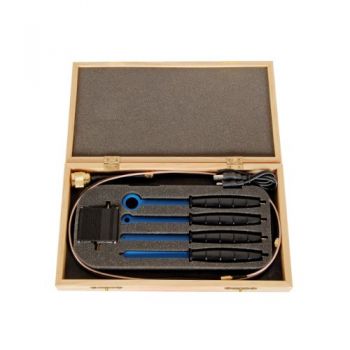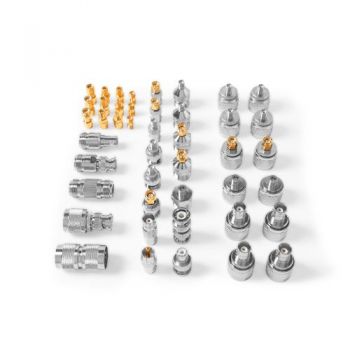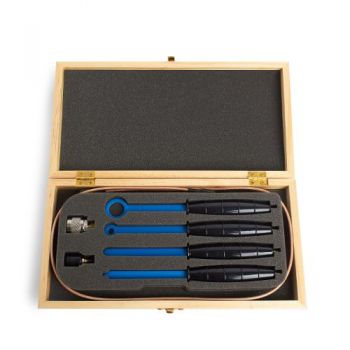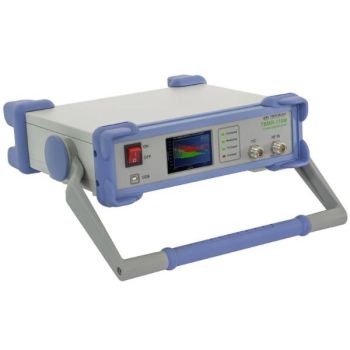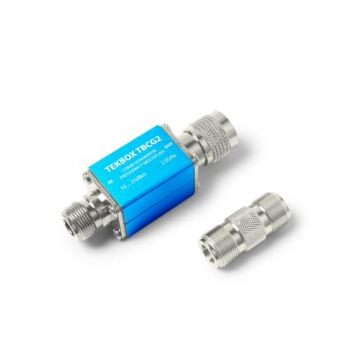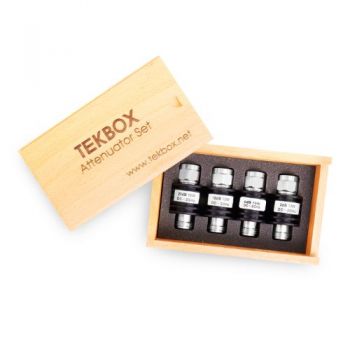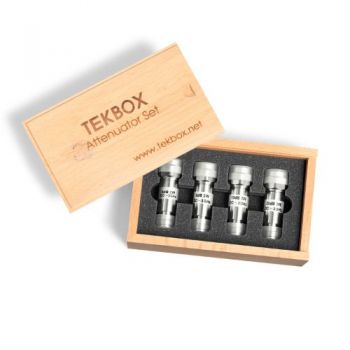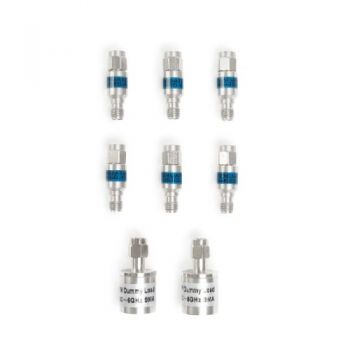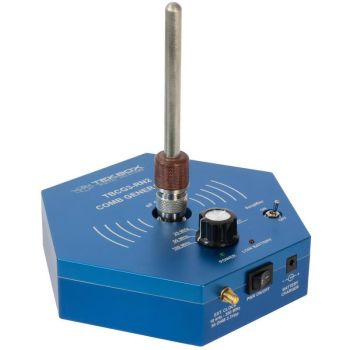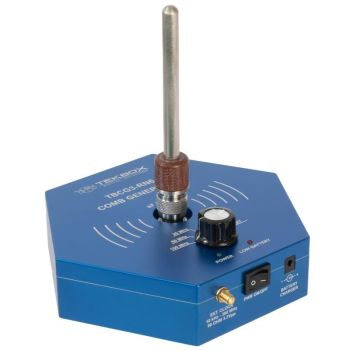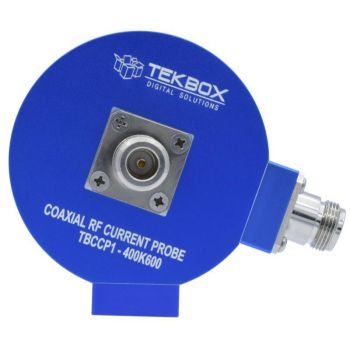Products
The H20, H10, H5, and E5 are magnetic field (H) and electric field (E) probes for radiated emissions EMC pre-compliance measurements. The probes are used in the near field of sources of electromagnetic radiation. They serve to locate and identify potential sources of interference within the building blocks of electronic assemblies. The probes act similar to wide bandwidth antennas, picking up radiated emissions from components, PCB traces, housing openings or gaps and from any other parts that could be emitting RF. The probes are usually connected to a spectrum analyzer. Scanning the probe over the surface of a PCB assembly or housing quickly identifies locations which emit electromagnetic radiation. By changing to a probe with a smaller size, the origination of the emissions can be further narrowed down. With TBWA2 WIDEBAND AMPLIFIER/40DB
The H20, H10, H5, and E5 are magnetic field (H) and electric field (E) probes for radiated emissions EMC pre-compliance measurements. The probes are used in the near field of sources of electromagnetic radiation. They serve to locate and identify potential sources of interference within the building blocks of electronic assemblies. The probes act similar to wide bandwidth antennas, picking up radiated emissions from components, PCB traces, housing openings or gaps and from any other parts that could be emitting RF. The probes are usually connected to a spectrum analyzer. Scanning the probe over the surface of a PCB assembly or housing quickly identifies locations which emit electromagnetic radiation. By changing to a probe with a smaller size, the origination of the emissions can be further narrowed down. With TBWA2 WIDEBAND AMPLIFIER/20DB
The TBCAS1 coaxial adapter set contains 44 pieces of the most common 50 Ohm coaxial adapters in a beechwood box
The H20, H10, H5, and E5 are magnetic field (H) and electric field (E) probes for radiated emissions EMC pre-compliance measurements. The probes are used in the near field of sources of electromagnetic radiation. They serve to locate and identify potential sources of interference within the building blocks of electronic assemblies. The probes act similar to wide bandwidth antennas, picking up radiated emissions from components, PCB traces, housing openings or gaps, and from any other parts that could be emitting RF. The probes are usually connected to a spectrum analyzer. Scanning the probe over the surface of a PCB assembly or housing quickly identifies locations that emit electromagnetic radiation. By changing to a probe with a smaller size, the origination of the emissions can be further narrowed down.
The TBMR-110M EMI Analyzer is designed to carry out conducted emission measurements. Its affordability and versatility make it a perfect tool for engineers doing pre-compliance measurements during the development process.
- True DC – 110 MHz measurement range
- CISPR-16, ANSI and MIL-STD compliant detectors
- Peak, Quasi-Peak, Average, CISPR Average, RMS and CISPR RMS dectectors working in parallel
- Zero Span operation with time domain triggering
- Linear, log amplitude and frequency display
The TBCG2 is a passive, step recovery diode based comb generator/frequency multiplier. It is optimized for moderate drive power and spectrum flatness in the frequency range 1 MHz to 2.5GHz. The recommended drive power is +10 dBm to +20 dBm The frequency range for the drive signal is 1 MHz to 350MHz
The TBAS3 RF 10W attenuator set consists of a 3dB, 6dB, 10dB and 20dB attenuator in a beech wood box.
The TBAS1 RF 2W attenuator set
The TBAS2 RF SMA attenuator/termination set consists of a 3dB, 6dB, 10dB, 15dB, 20dB and 30dB SMA attenuators in a beechwood box. Furthermore, it contains two pieces SMA 50 Ohm terminations.
The TBCG3-RN2 comb generator is primarily intended for testing radiated emission setups. It is a useful tool for validating the proper operation of the antenna and pre-amplifier, as well as the accurate set-up and configuration of the spectrum analyzer.
- 5 kHz-2 GHz,
- switchable 5, 10, 25, 50, 100 MHz,
- external: 5 kHz-200 MHz,
- 6xNiMH, AA, Charger,
- 2 monopole antennas
The TBCG3-RN6 comb generator is primarily intended for testing radiated emission setups. It is a useful tool for validating the proper operation of the antenna and pre-amplifier, as well as the accurate set-up and configuration of the spectrum analyzer.
- 5 kHz-6 GHz,
- switchable 5, 10, 25, 50, 100 MHz,
- external: 5 kHz-200 MHz,
- 6xNiMH, AA, Charger,
- 2 monopole antennas
The TBCCP1-400K600 is a coaxial RF current monitoring probe with a 3 dB bandwidth from 400 kHz to 600 MHz and a very flat response from 1 MHz to 200 MHz.

